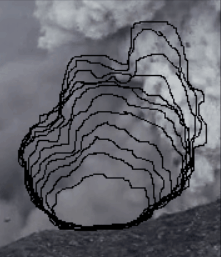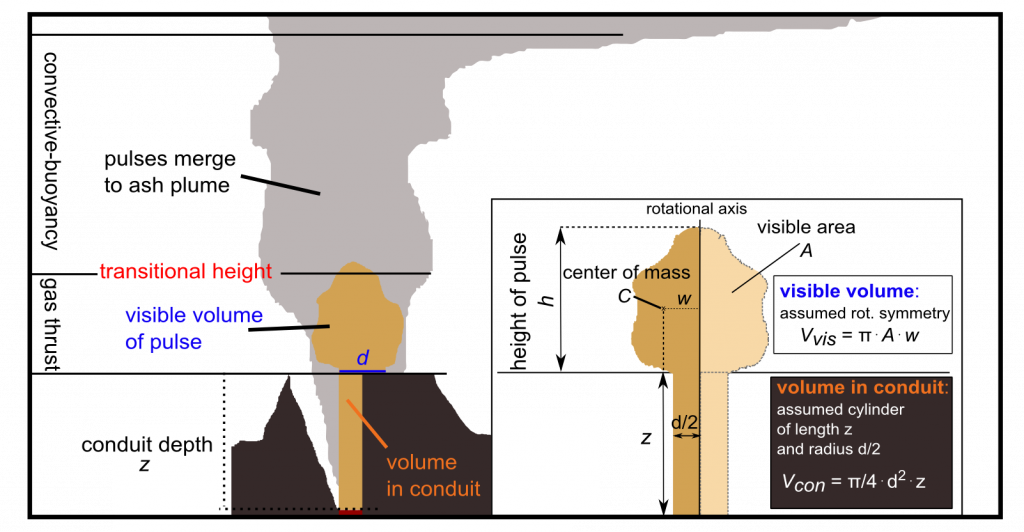Unsteady source conditions
Almost all 1D models presume steady flow conditions at the source. Many small to medium-sized explosive eruptions, however, also show stages of pulsating behavior, which could be a potential source of error when applying steady 1D models.

Under unsteady source conditions, plumes are not fed by a constant stream of ash and gas, but by a sequence of ash "pulses". The depicted image sequence shows the contours of an analyzed ash pulse during the 2010 Eyjafjallajökull eruption [1]. (Courtesy of M. Rietze [2])
Within MAXI-Plume this tool will be applied in combination with a time-dependent 1D plume model [3] to a number of Icelandic case scenarios (including the eruptions of Grímsvötn 2004 and 2011).

Based on video analysis and geometrical considerations, the volume, mass and density of individual ash pulses can be reconstructed. With these data and by counting the frequency of ash pulses it is possible to estimate the mass flux. (For details about this principle, please see Dürig et al. [1]).
References and annotations:
[2]: www.mrietze.de
[3]: Woodhouse, M. J., Phillips, J. C. & Hogg A. J. Unsteady turbulent buoyant plumes. J. Fluid Mech., 794, 595-638 (2016)

